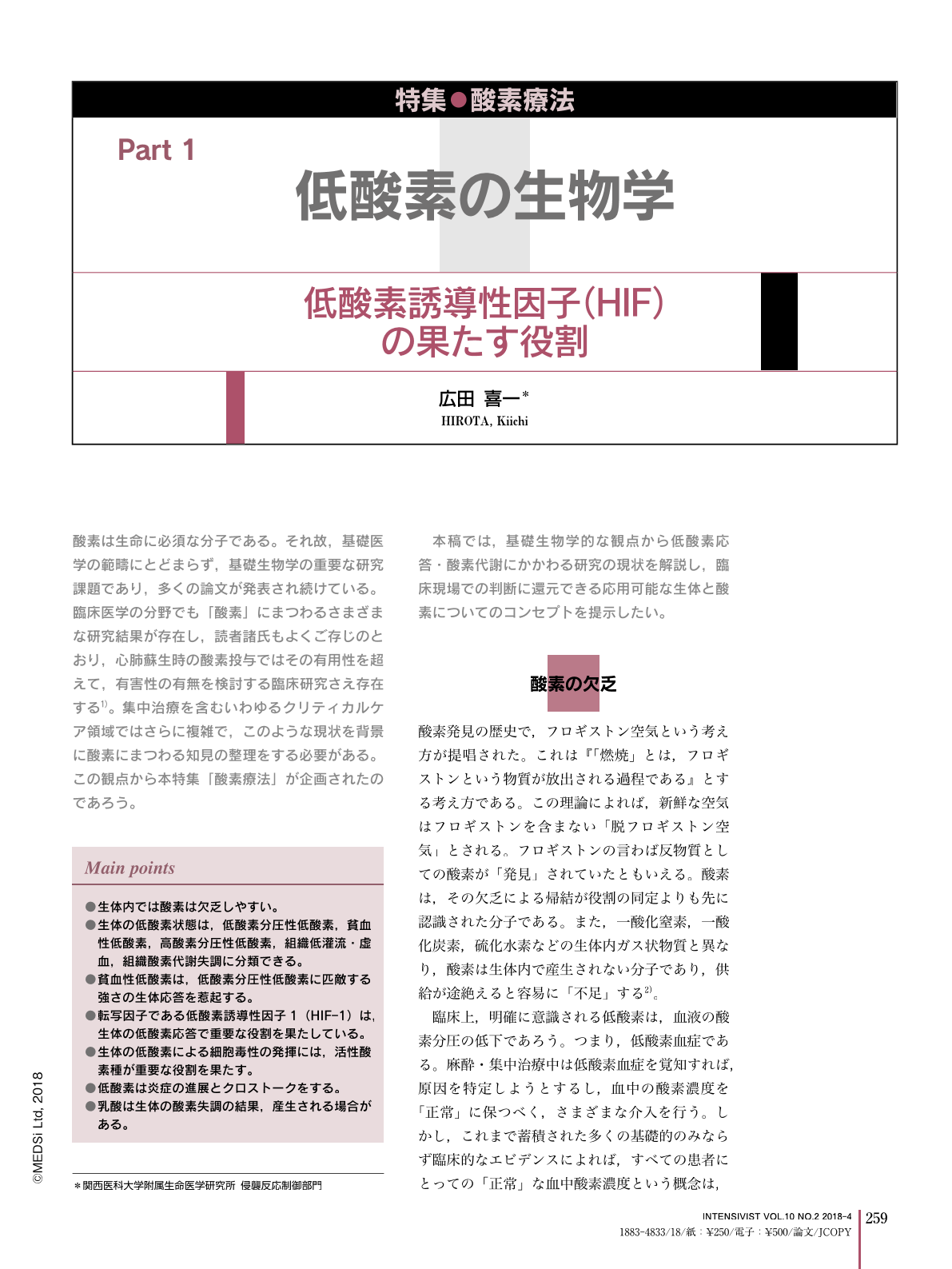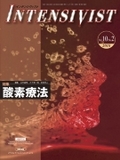Japanese
English
- 有料閲覧
- Abstract 文献概要
- 1ページ目 Look Inside
- 参考文献 Reference
- サイト内被引用 Cited by
酸素は生命に必須な分子である。それ故,基礎医学の範疇にとどまらず,基礎生物学の重要な研究課題であり,多くの論文が発表され続けている。臨床医学の分野でも「酸素」にまつわるさまざまな研究結果が存在し,読者諸氏もよくご存じのとおり,心肺蘇生時の酸素投与ではその有用性を超えて,有害性の有無を検討する臨床研究さえ存在する1)。集中治療を含むいわゆるクリティカルケア領域ではさらに複雑で,このような現状を背景に酸素にまつわる知見の整理をする必要がある。この観点から本特集「酸素療法」が企画されたのであろう。
本稿では,基礎生物学的な観点から低酸素応答・酸素代謝にかかわる研究の現状を解説し,臨床現場での判断に還元できる応用可能な生体と酸素についてのコンセプトを提示したい。
Main points
●生体内では酸素は欠乏しやすい。
●生体の低酸素状態は,低酸素分圧性低酸素,貧血性低酸素,高酸素分圧性低酸素,組織低灌流・虚血,組織酸素代謝失調に分類できる。
●貧血性低酸素は,低酸素分圧性低酸素に匹敵する強さの生体応答を惹起する。
●転写因子である低酸素誘導性因子1(HIF-1)は,生体の低酸素応答で重要な役割を果たしている。
●生体の低酸素による細胞毒性の発揮には,活性酸素種が重要な役割を果たす。
●低酸素は炎症の進展とクロストークをする。
●乳酸は生体の酸素失調の結果,産生される場合がある。
Although Joseph Priestley, a British natural philosopher and scientist, first isolated molecular oxygen and studied its nature nearly 250 years ago, the details of the mechanisms of the body's coordinated response to hypoxia were not unveiled until just 25 years ago. Humans have evolved complex circulatory, respiratory, and erythroid systems to ensure that oxygen levels are precisely maintained, since an excess or deficiency may be toxic and result in the death of cells, tissue, or the organism. Traditionally, oxygen sensing was thought to be restricted to specialized organs, such as the carotid body, which depolarizes within milliseconds in response to hypoxemia. It is now well recognized that all nucleated cells in the body sense and respond to hypoxia by themselves. The key molecules for coordinated oxygen homeostasis are the family of hypoxia-inducible factors including HIF-1, HIF-2, and HIF-3, which are transcription regulators that respond to reduced levels of oxygen and bind to specific DNA sequences, thus controlling the expression of genes that mediate adaptive responses. In this review, I will describe the coordinated systems of the HIF family from the point of view of Critical Care Medicine.

Copyright © 2018, MEDICAL SCIENCES INTERNATIONAL, LTD. All rights reserved.


